Affiliate disclosure: This post may contain affiliate links. Please see our Privacy Policy.
Crabapple wine is a wonderful way to use up those crab apples that so often go to waste. You can also try your hand at crab apple mead using honey instead for equally delicious results.
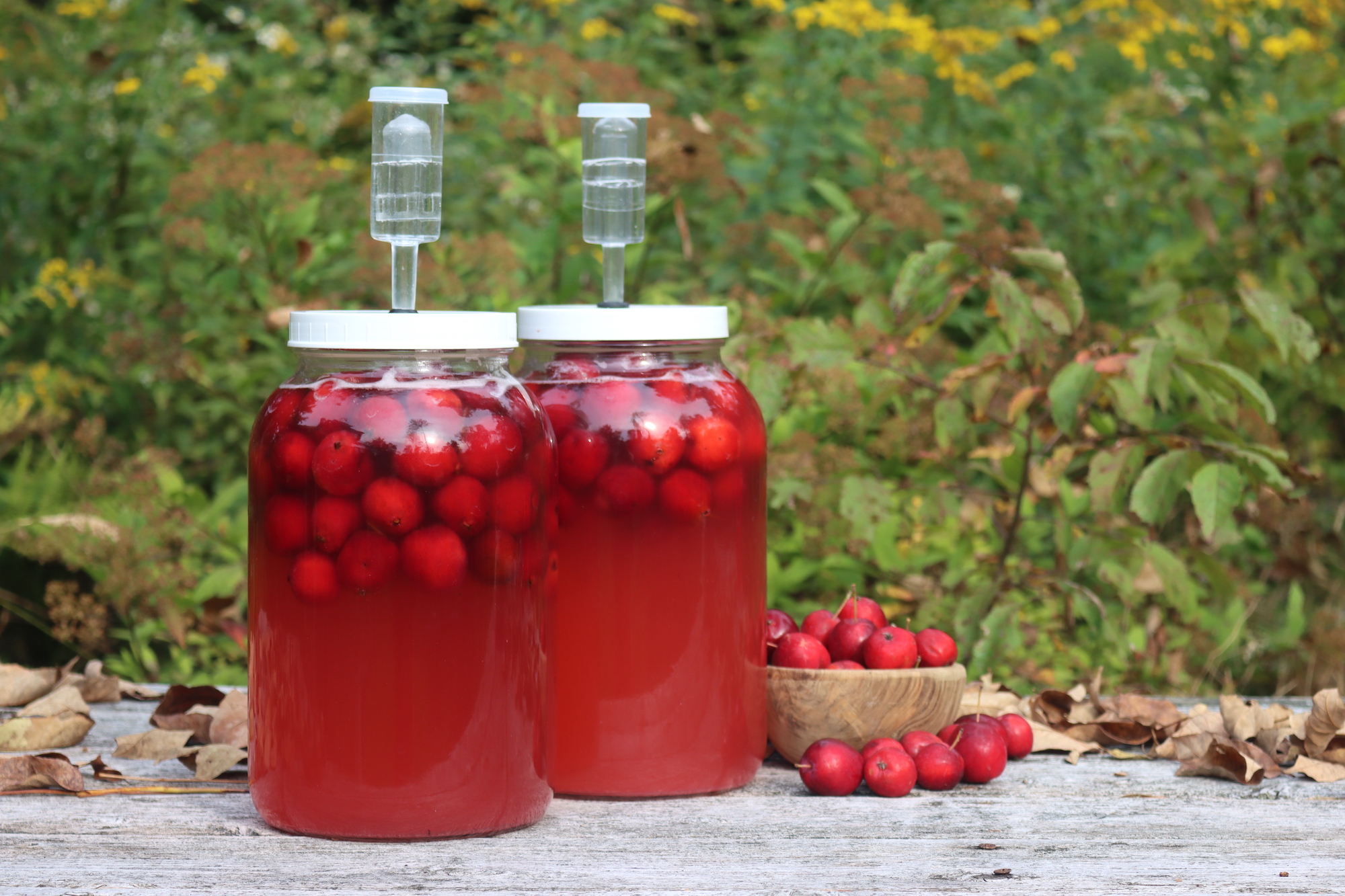
Crab apples have a reputation for being tart and bitter, but there’s actually a lot of variation in their flavors, with some even being pleasantly sweet. Dolgo crabapple, for example, bears a very tasty fruit with an engaging sweet-tart flavor like a sweetened cranberry.
Due to the variation in crab apples, it can be challenging to describe how crab apple wine generally tastes, as the type of crab apples chosen heavily influences this. Although the flavor and coloring may vary, one thing often remains the same: crab apple wine is a beautifully dry wine.
Regardless of the variety, crab apples should be selected at their peak ripeness to bestow the best flavor to your wine. Look for crab apples that have a little give but aren’t mushy. The coloring can vary, so it’s best to go by feel. If cut open, ripe crab apples should also have brown seeds (not green or white).
The process for crafting a batch of crab apple wine is the same as that of any small-batch country wine.
You’ll need to crush the apples and add sugar (or honey for mead) to sweeten the medley. Add a few other winemaking additives and a nice wine yeast, and you’re ready to go!
This mixture will ferment for 7 to 10 days, during which time it will be most active. Once this active bubbling dies down, the wine is siphoned to a clean vessel for secondary fermentation, discarding the apples and sediment. Here, the wine ferments at a slower pace, ideally in a cool and dark location. The time spent here can range anywhere from 2 to 6 months.
Now, it’s time for bottling. Once bottled, the wine is left to mature and be enjoyed later. Overall, it’s pretty simple!
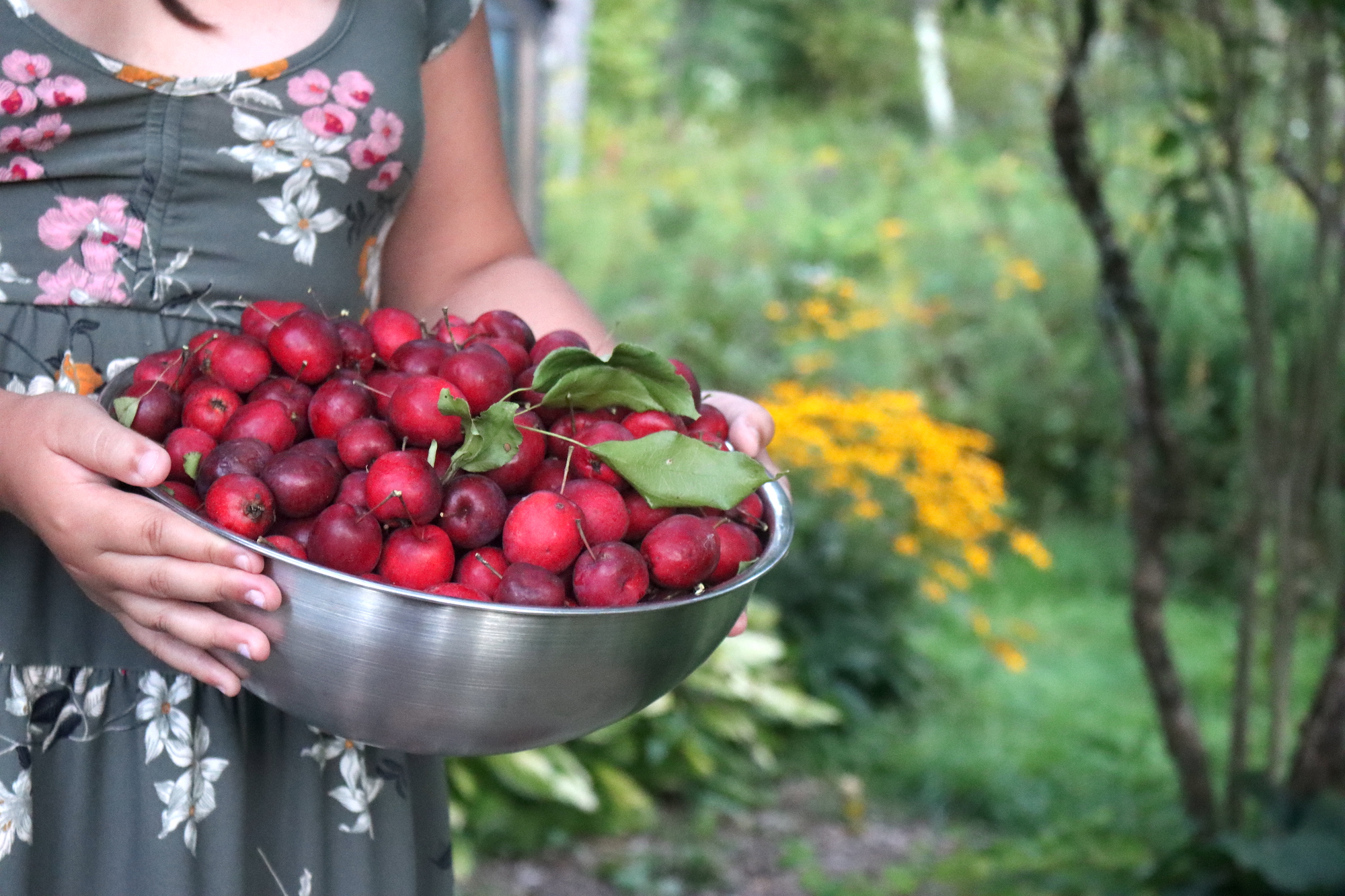
Most of my recipes are written for readers who are familiar with the basic winemaking process and its terms. If you’re new, need some reminding, or are looking for additional information, I have specific guides to help you for just about every winemaking topic:
- Beginners Guide to Making Fruit Wines follows all the steps in the winemaking process from start to finish.
- How to Make Mead (Honey Wine) is nearly the same but covers all the particularities when working with honey.
- Equipment for Winemaking has everything you need to make your first batch (besides your ingredients).
- Ingredients for Winemaking examines everything else you’ll need in your batch (besides yeast)
- Yeast for Winemaking may sound intimidating, given the dozens of common strains (and hundreds of obscure ones) available. Read this to make sure you pick the right one.
Ingredients for Crab Apple Wine
Before you begin that batch of crabapple wine, you will need to collect your ingredients.
If you are new to Winemaking and curious about the role each of these elements plays in the process, I recommend you read this primer on winemaking ingredients to help you understand what they do and any possible substitutions you can use.
To make a one-gallon batch of crab apple wine, you will require:
- 4 lbs ripe crab apples
- 2 lbs granulated sugar (4 cups)
- 1 tsp Yeast Nutrient
- ½ tsp Acid Blend
- ¼ tsp Wine Tannin
- ½ tsp Pectic Enzyme
- Wine yeast (preferably Champagne yeast)
- Water (to fill)
You can find pectic enzyme, acid blend, and wine tannin in an online kit. After that, you’ll need a small packet of yeast nutrients and a wine yeast.
Pectic enzyme will help your wine to clear. Although pectin is excellent in jams and pie fillings, it is not welcome in Winemaking.
Acid blend and wine tannin help give the wine a balanced mouthfeel (and the acidic environment is needed for the yeast to flourish).
For a one-gallon batch, you’ll need 2 lbs of sugar. At 2 cups a pound, that equals about 4 cups. Regarding crab apples, 4 lbs of ripe crab apples will be a good amount.
If making crab apple mead, you’ll be substituting honey for sugar. Use about 2 1/2 to 3 lbs (1 quart) of honey for mead, preferably wild honey.
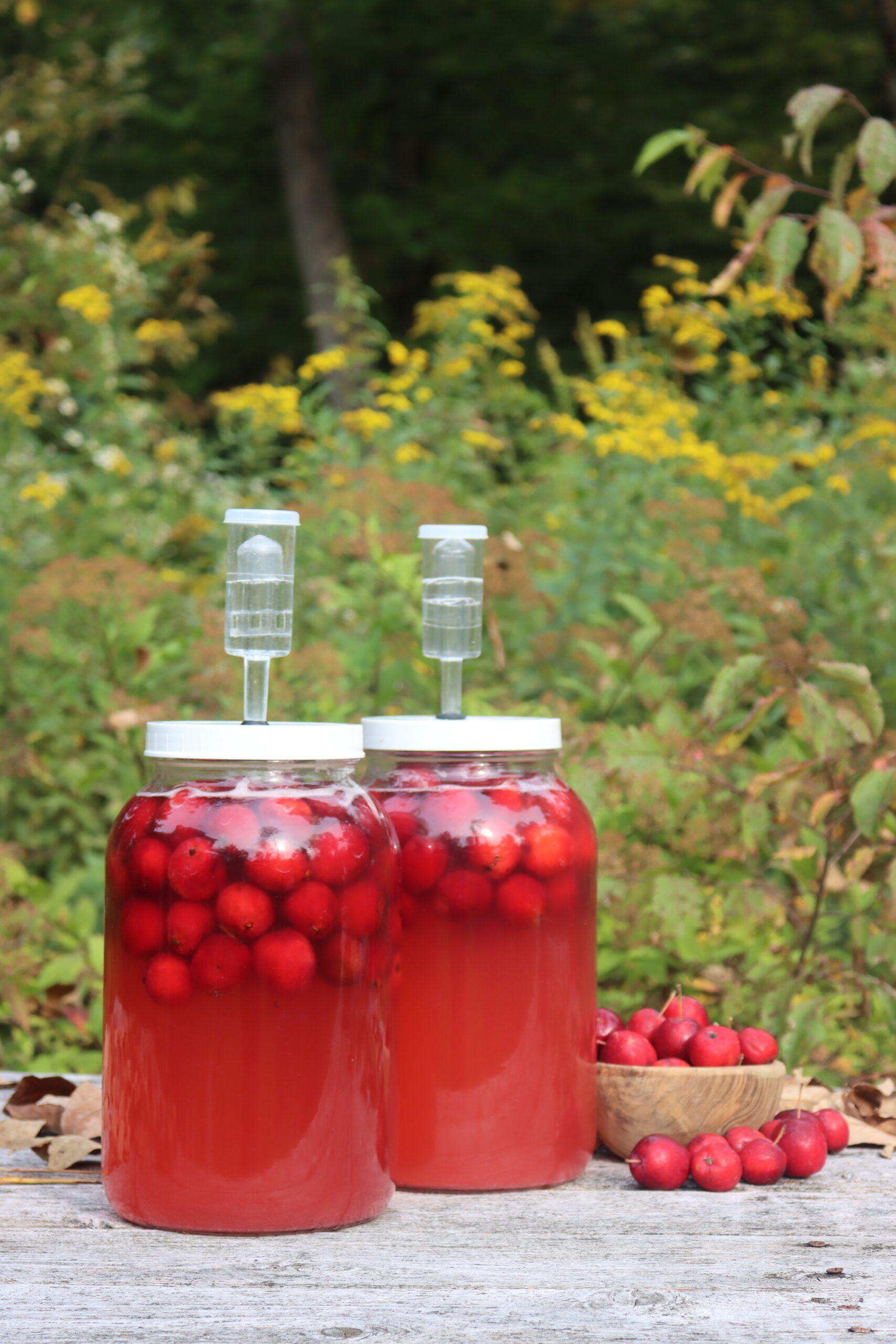
Yeast for Crabapple Wine
For yeast, champagne yeast is the most recommended. Some good options include Red Star Premier Blanc and Red Star Premier Cuvee or Lalvin EC-1118.
Red Star Premier Cuvee and Lalvin EC-1118 are strong fermenters with a high alcohol tolerance and a neutral taste. The tolerance can be as high as 18% in ideal conditions but usually sits at 15%. It will result in a pretty dry wine (although you can back sweeten to address this). The ideal temperature range is between 59°F and 86°F.
Red Star Premier Blanc is a relatively neutral wine yeast with a similar alcohol tolerance. It will also yield a dry wine. The alcohol tolerance is up to 15%, and the temperature range is between 59°F and 86°F.
Now that you’ve sourced your winemaking ingredients, it’s time to ensure you also have all the right equipment before beginning. You will need:
- One-Gallon Wide Mouth Fermentation Vessel for the primary fermentation
- One One-gallon glass Carboy for secondary (often sold as a kit with a rubber stopper and water lock together)
- Rubber Stopper and Water Lock (if not included above)
- Brewing Siphon
- Wine Bottles or Flip-top Grolsch bottles
- Bottle Corker and clean, new corks for bottling the wine
- Brewing Sanitizer
Making Crab Apple Wine
To make crab apple wine, you will need to start by crushing the crab apples.
The crab apples do not need to be peeled, but the seeds can be removed if desired. At the very least, try to avoid cutting or crushing the seeds. Cutting out the stalks is also recommended.
Begin by washing the crab apples well to remove any lingering residue. Next, you’ll need to crush them. Some do this by placing apples in a bin and crushing them with a piece of hardwood. You can also use an apple crusher or press for this part.
Apples can be softened beforehand by freezing and thawing (this will also help break down any pectin in the fruit). One week in the freezer reduces pectin content by 50%, which is perfect for winemaking (but not great if you’re making crabapple jelly).
Four pounds of crabapples is just under a gallon or so by volume, so I fill a gallon ziploc and toss them in the freezer for at least a week before making wine.
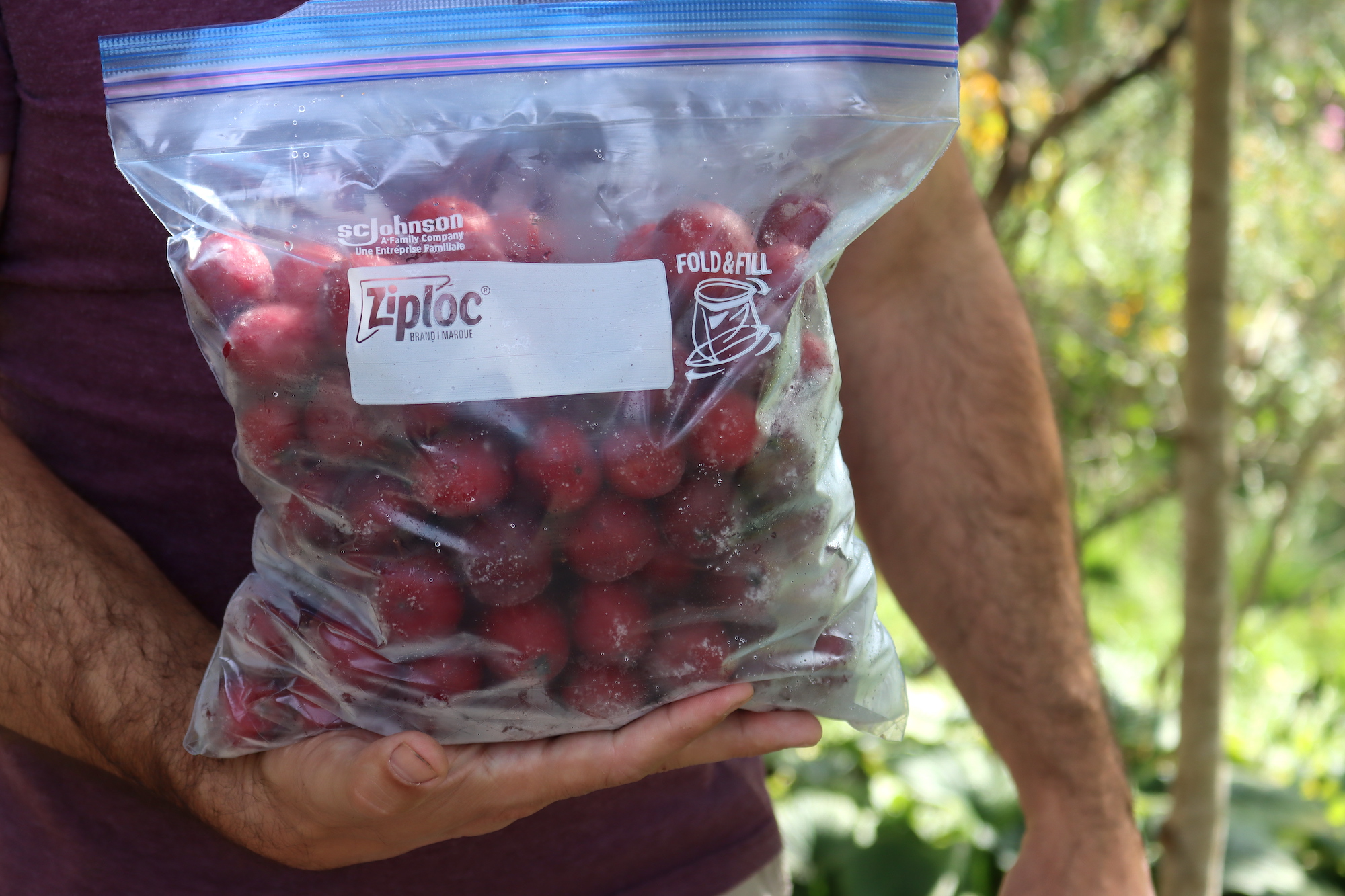
Place the crushed crab apples in a wide-mouth carboy for the primary ferment.
Next, bring a few quarts of water to boil. Add the sugar and stir to dissolve. Pour this into your fermentation vessel over the apples. Let cool.
Once lukewarm, add the remaining ingredients (yeast nutrient, wine tannin, acid blend, and pectic enzyme) except for the wine yeast.
The yeast must be added last. Rehydrate it first in a small amount of room-temperature water for 10 minutes before adding it. (Pouring your yeast directly into your vessel can shock it.)
After you’ve added the yeast, top with water, leaving just 2 inches of headspace. Seal with a water lock and ferment in primary for about seven days.
In a few days, an active primary ferment should be apparent. Towards the end of your primary week, this bubbling should begin to slow and die down.
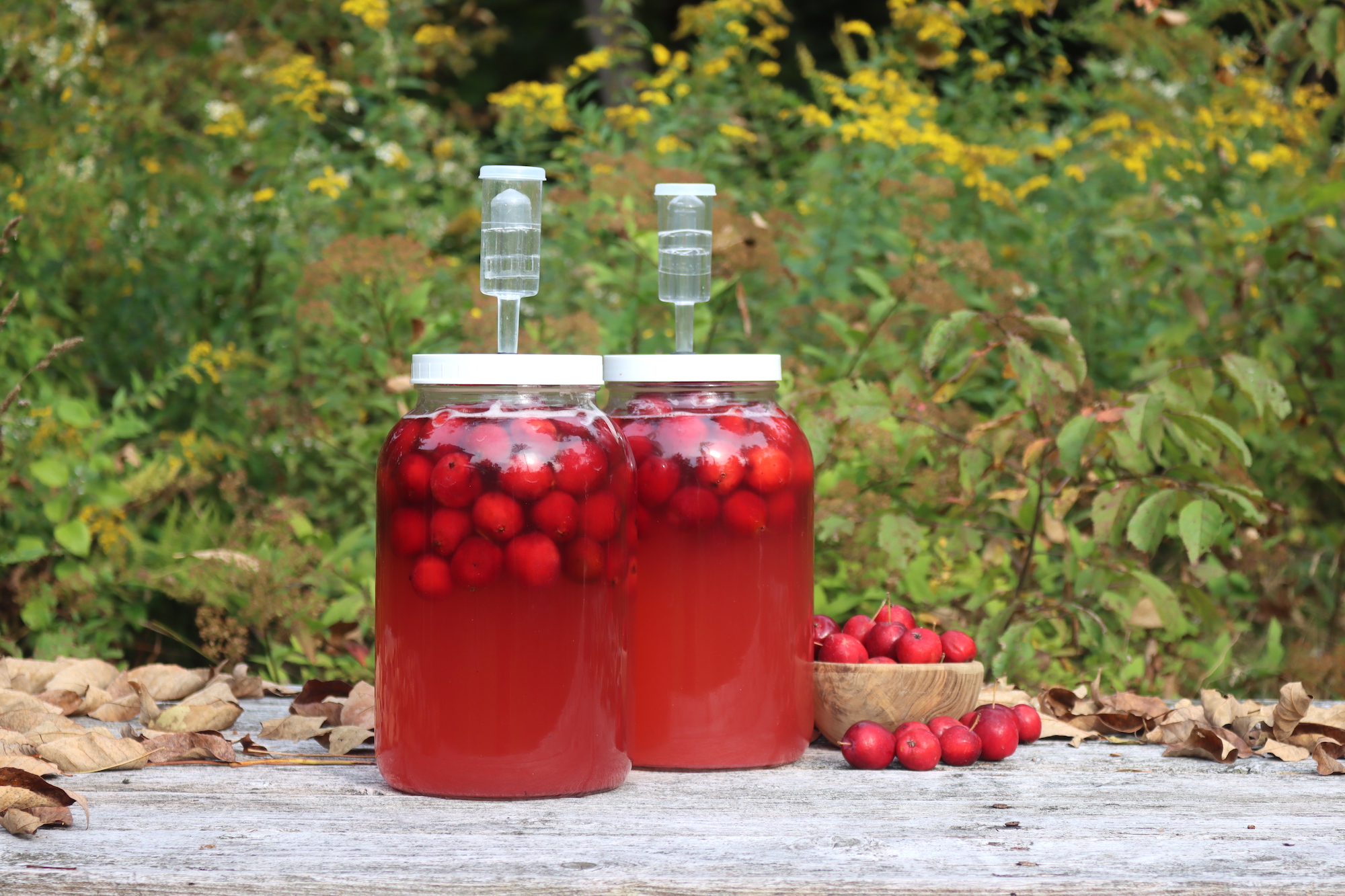
Rack to a clean container for secondary, leaving the sediment behind and straining out the apples. Top with enough water to bring the level up to the neck of your carboy and seal with a water lock.
At this point, you should rack the wine every two months. Sample the wine after the third racking. If it is too dry, you can back-sweeten it before bottling.
To back sweeten, first rack the wine into a clean container. Next, stabilize the wine by adding 1 Campden tablet and ½ teaspoons of potassium sorbate. Wait 24 to 48 hours for the yeast to die fully before adding any sugar.
To add sugar, create a simple syrup by heating equal parts water and sugar on the stove. When back sweetening a one-gallon batch of wine, I’d suggest starting with ½ cup sugar.
After sugar is added, it is a good idea to put the wine back into fermentation for a week before bottling to prevent the fermentation from restarting.
For those who’d prefer not to stabilize before back sweetening, you can also add sugar and put the wine back into ferment until all signs of yeast activity have died out (about a month).
Do be aware, though, that if you bottle wine while it is still fermenting, the pressure may push out wine corks or even cause bottles to burst. This is more likely to occur when using strong fermenters like Lalvin EC-1118.
When ready, bottle the wine and seal it with wine corks. For the best quality, let the wine age for a year.
Ways to Preserve Crab Apples
Looking for more ways to preserve apples and crabapples?

Crabapple Wine (& Mead)
Equipment
- Air Lock & Stopper
Ingredients
- 4 lbs crab apples, fully ripe
- 2 lbs Sugar, about 2 cups per pound
- 1 tsp yeast nutrient
- ½ tsp acid blend
- ½ tsp Pectic Enzyme
- ¼ tsp tannin powder
- 1 packet wine yeast, see note
- Water, to fill
- Optional ~ Campden Tablet and Potassium Sorbate for Stabilizing, I do not use these
Instructions
- Wash crab apples before beginning. The peels may be left on the apples, but the stalks should be removed.
- Crush the apples using a piece of hardwood. (Apples can be frozen beforehand and then thawed to help soften them for crushing.)
- Place crushed apples in a wide-mouth carboy for primary ferment.
- Bring a few quarts of water to a boil. Add the sugar and stir to dissolve.
- Pour the mixture into the carboy, covering the crushed apples. Let cool.
- Once lukewarm, add the remaining ingredients except for the yeast.
- The yeast must be added last. Rehydrate the yeast first in a small portion of room temperature water before adding.
- Once the yeast is added, top with enough water to leave 2 inches of headspace and seal with a water lock.
- Ferment in primary for 7 days.
- Siphon to a clean fermentation vessel for secondary, leaving sediment and apples behind. Top with enough water to bring the level up to the neck of the carboy and seal with a water lock.
- Rack the wine every two months.
- On the third racking, sample the wine. If needed, adjust to taste. (See notes for info regarding backsweetening.)
- Once ready, rack the wine into bottles and seal with wine corks.
- Allow the wine to mature for 1 year before drinking for the best quality wine.
Notes
Amount of Crab Apples
You'll need about 4 lbs of ripe crab apples for every one-gallon batch of wine you want to produce.Crab Apple Mead
If making crab apple mead, substitute 1 quart of honey (3 lbs) for the sugar. Know that the time spent in secondary may be longer, as honey is harder for yeast to digest than honey, and as such the ferment will take longer.Yeast
For crab apple wine, look for a wine yeast with moderate alcohol tolerance that ferments clean or adds light fruit flavors. Champagne yeasts are preferred. Some particular yeast choices include Red Star Premier Blanc and Red Star Premier Cuvee or Lalvin EC-1118. See notes within the article for specific qualities of each yeast.Stabilizing and Back Sweetening
If you sample your wine before bottling and find it too dry, you can backsweeten. To do so, rack to a clean container and stabilize (done by adding 1 Campden tablet and ½ teaspoon potassium sorbate). Wait 24 hours for the yeast to die off before adding sugar. Add sugar by making a simple syrup of 1 part sugar and 1 part water. Tastes will vary, but beginning with ½ cup sugar is a decent start. Put the wine back into ferment for a week before bottling to ensure fermentation does not restart. Bottled wine that contains active ferments results in pressure (sometimes pushing corks out, other times causing bottles to burst.) For further information on backsweetening, see notes within the article.Nutrition
Nutrition information is automatically calculated, so should only be used as an approximation.
Winemaking Recipes
Are you looking for more Autumn seasonal winemaking recipes? I have one available for nearly every fruit (and a good deal of flower and veggie ones as well).
- Apple Wine
- Cranberry Wine
- Elderberry Wine
- Peach Wine
- Persimmon Wine
- Greengage Plum Wine
- Beetroot Wine
- Parsnip Wine
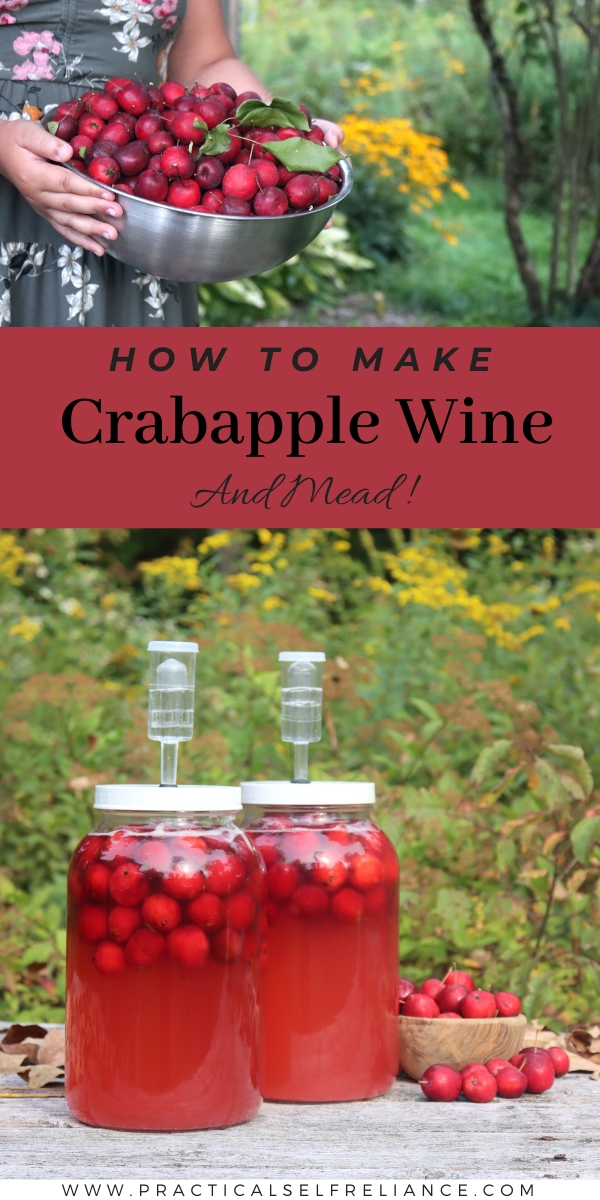



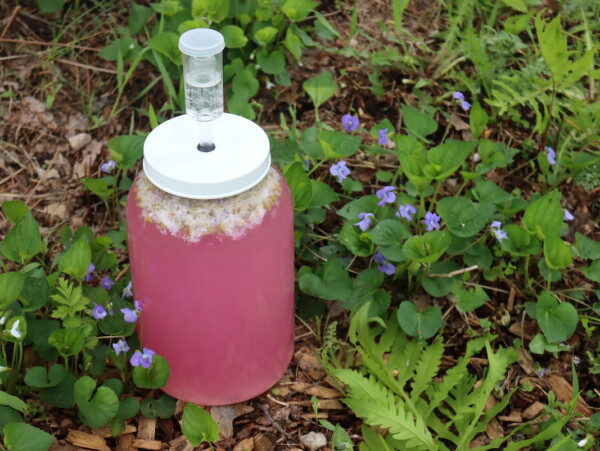










This is such a great way to use up crabapples in season. It doesn’t matter if they’re acidic or tannic, that’s actually better for the finished wine, believe it or not. Absolutely delicious!